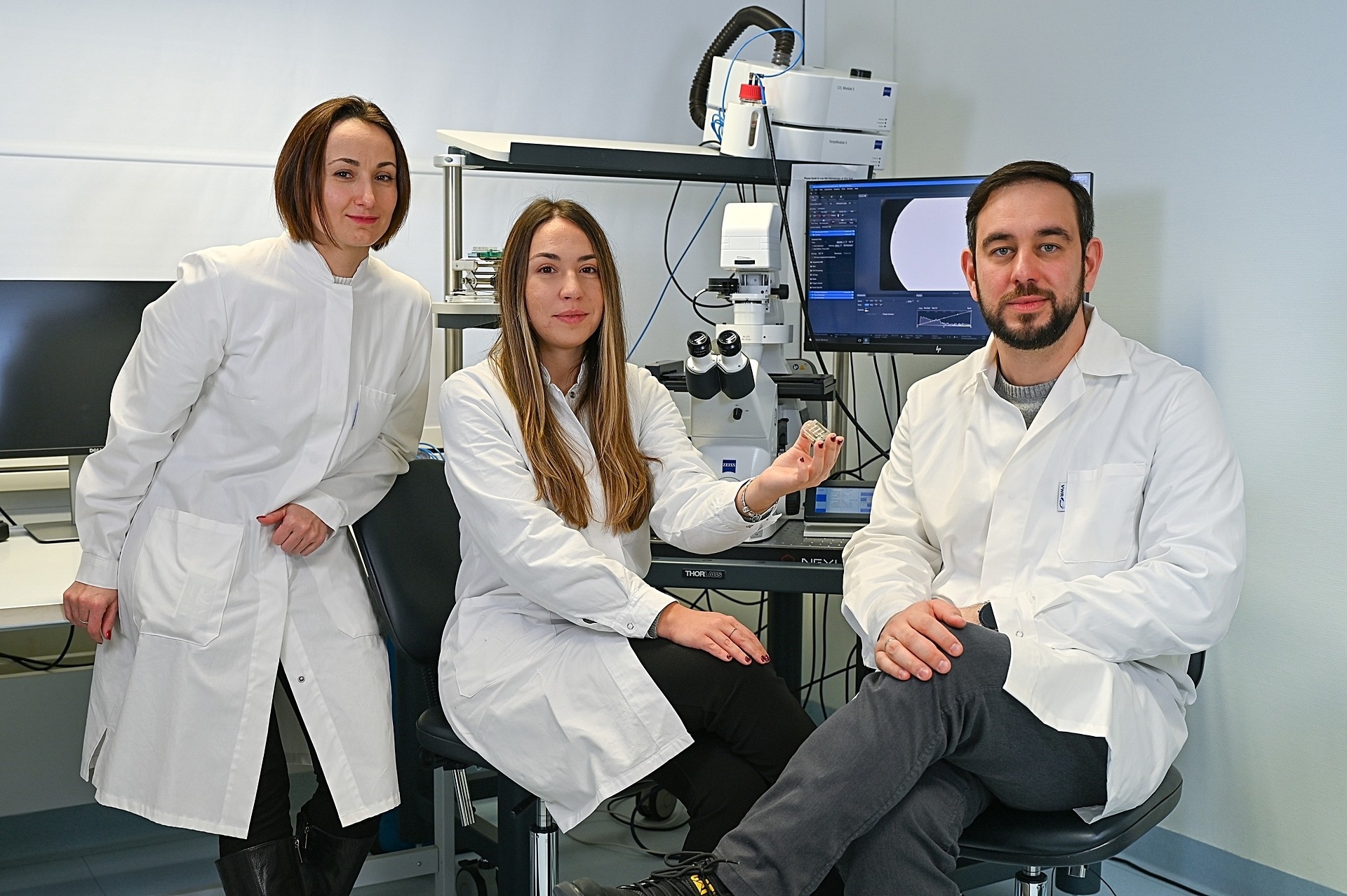
Dr. Larysa Baraban (left), Isli Cela (center), and Dr. Željko Janicijevic (right) spent many hours researching the extended gate together. Image Credit: HZDR/Anja Schneider
There are numerous options and methods for finding pathogens in bodily fluids. Baraban at the HZDR-Institute of Radiopharmaceutical Cancer Research looks into a number of possibilities, including the use of electronics field-effect transistors (FETs) for detection. The concept of operation is straightforward: an electrical current is defined and flows from A to B.
The electrical potential on a gate's surface, which acts as a continuous, precise valve, can control this current. Biomolecules associated with disease-relevant conditions attach to the gate surface, altering the electrical potential and, consequently, the current.
If the current does not change significantly, then no biomolecules have attached themselves to the surface of the sensor. Conversely, a change in current allows for the detection of disease-related molecules on the sensor surface. These biosensors can be made to target particular biomolecules for detection. Different infections result in various electrical potentials and currents. Different currents are produced by cancer cells than, say, by a flu virus.
Development of Reusable Transistors
The main drawback of conventional electronic FET-based biosensors is that after each sample, the entire transistor needs to be disposed of, making the test surfaces non-reusable. This process is costly and environmentally hazardous because transistors require expensive semiconductor materials. Because of this, Baraban and the Department of Nano-Microsystems for Life Sciences took things a step further and tried to measure the potential changes on an independent electrode that is connected to the transistor's gate rather than directly on the transistor’s surface.
This allows us the opportunity to use the transistor multiple times. We separate the gate and refer to it as an ‘extended gate’- that is, an extension of the test system.
Dr. Larysa Baraban, Researcher, Institute of Radiopharmaceutical Cancer Research, Helmholtz-Zentrum Dresden-Rossendorf
The team thought even further ahead and took on another challenge: “We, of course, would like this system to carry out several analyzes at the same time. The researchers succeeded in developing extended gates with thirty-two test pads. This means that a sample can be tested simultaneously on each of the pads for a different pathogen,” Baraban details.
The scientists first demonstrated the operating principle using interleukin-6 (IL-6), a molecule responsible for communication between immune cells. Baraban says, “Whether it’s a simple cold or cancer, the concentration of IL-6 changes. Different diseases as well as different stages of a disease produce different clinical pictures. That is why IL-6 is very well suited as a marker.”
Nanoparticles to Increase Sensitivity
Baraban's group also made use of nanostructures to increase the method's sensitivity. In order to increase the voltage signal, nanoparticles concentrate or localize the charge. “The tests have a much higher sensitivity than when we don't use nanoparticles.” This approach is easy to use because pre-made nanoparticle kits for research are now readily available. Currently, gold nanoparticles are being worked with by HZDR scientists. They hope to investigate other nanoparticles in the future.
The current research has led to the development of a practical, useful test system that consists of 32 test pads and a transistor and allows for the rapid detection of various pathogens. The test system that has been described has the potential to be utilized in the future to track the effectiveness of immunotherapies in cancer patients.
Predicting at the outset the severity and trajectory of a viral disease, like the flu or COVID-19, is an additional option. In contrast to current technologies, the new system is faster and more economical. Baraban and her group are now hoping for interest from the commercial sector as a result.
Journal Reference
Janićijević, Ž., et al. (2023). Methods gold standard in clinic millifluidics multiplexed extended gate field-effect transistor biosensor with gold nanoantennae as signal amplifiers. Biosensors and Bioelectronics. doi.org/10.1016/j.bios.2023.115701.